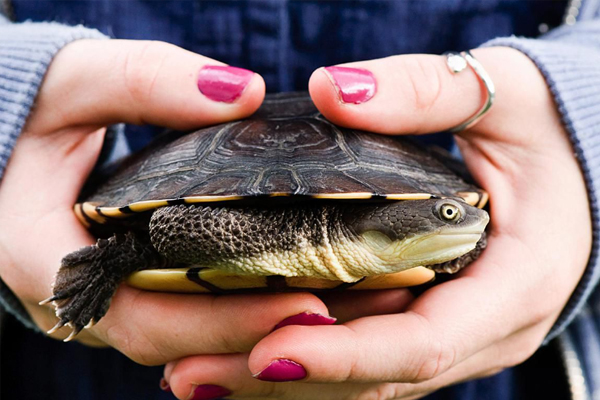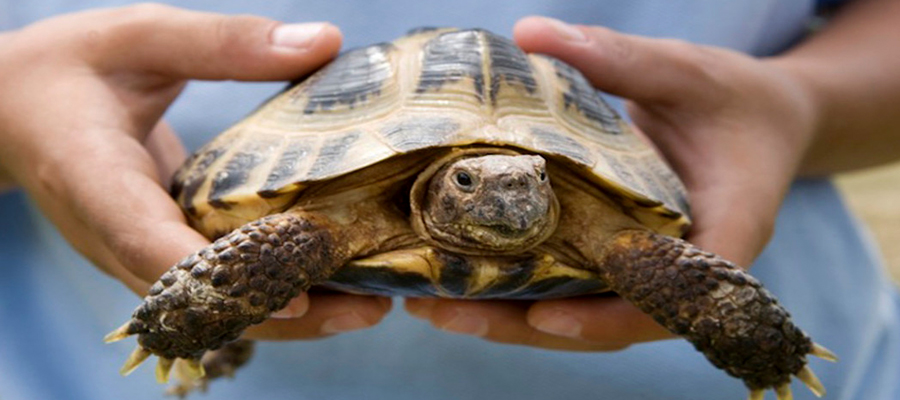Turtles, like all animals, can carry bacteria, parasites, and other microorganisms that might not harm them but can potentially pose health risks to humans. While pet turtles are generally considered safe to handle, it’s crucial to remember that they live in aquatic environments that can harbor germs and pathogens. These pathogens can be transmitted to humans through contact, especially if proper hygiene practices are not followed.
Here are several compelling reasons why washing your hands after handling a pet turtle is essential:
Salmonella Risk
One of the primary concerns when handling pet turtles is the risk of Salmonella infection. Salmonella is a type of bacteria commonly found in reptile digestive tracts, including turtles. Even healthy-looking turtles can carry Salmonella without showing any symptoms. When you handle your pet turtle or come into contact with their habitat, there’s a potential for Salmonella exposure.
Preventing Cross-Contamination
Washing your hands after handling your pet turtle is not only for your protection but also to prevent cross-contamination within your household. If you fail to wash your hands, you can transfer bacteria and germs from your turtle’s habitat or body to other surfaces and objects in your home. These contaminated surfaces can then become potential sources of infection.
Protecting Vulnerable Populations
Certain individuals are more susceptible to infections than others. For example, young children have developing immune systems, making them more vulnerable to bacterial infections. Likewise, elderly individuals and those with compromised immune systems, such as individuals undergoing chemotherapy or living with autoimmune diseases, are at a higher risk of contracting infections like Salmonella.

Ways to Minimize the Risks
Now that we’ve established the importance of washing your hands after handling a pet turtle, let’s explore some key measures you can take to minimize the risks associated with turtle care:
Handwashing Guidelines
To ensure you are effectively reducing the risk of Salmonella and other potential infections, follow these handwashing guidelines:
Use warm, soapy water: Use warm water and soap to thoroughly clean your hands.
Scrub for at least 20 seconds: The Centers for Disease Control and Prevention (CDC) recommends washing your hands for at least 20 seconds, which is roughly the time it takes to sing “Happy Birthday” twice.
Pay attention to all hand surfaces: Don’t forget to clean between your fingers, under your nails, and the backs of your hands.
Hand Sanitizers
While handwashing with soap and water is the most effective method to remove bacteria, hand sanitizers can be used when soap and water are not readily available. Look for an alcohol-based hand sanitizer with at least 60% alcohol content. Apply the sanitizer to your hands and rub them together until they are dry.
However, it’s important to note that hand sanitizers are not as effective as handwashing in removing potential pathogens, including Salmonella. Whenever possible, opt for handwashing to ensure proper hygiene.
Dedicated Equipment
Consider designating certain equipment, such as towels, soap, and brushes, exclusively for turtle care. This helps prevent potential contamination of household items.
Keep Turtle Habitat Clean
Maintaining a clean and sanitary turtle habitat is crucial for reducing the risk of bacterial contamination. Regularly clean the tank or enclosure, including the water, filtration system, and substrate. Remove uneaten food promptly, as it can lead to bacterial growth.

Additionally, ensure that your turtle’s water temperature and pH levels are within the recommended ranges to help keep your pet healthy and reduce the potential for bacterial overgrowth in the water.
Regular Veterinary Checkups
Routine veterinary care is essential to monitor your pet turtle’s health and detect potential issues early. A veterinarian experienced with reptiles can provide guidance on proper care and hygiene practices.
While pet turtles are delightful and relatively low-maintenance companions, it’s essential to recognize the importance of proper hygiene when interacting with them. Salmonella risk and the potential for cross-contamination in your household should not be taken lightly. By following guidelines for handwashing and maintaining a clean turtle habitat, you can enjoy the company of your pet turtle while minimizing health risks and ensuring the safety of your entire household. Always consult with a veterinarian experienced in reptile care for personalized guidance on turtle hygiene and health management.


